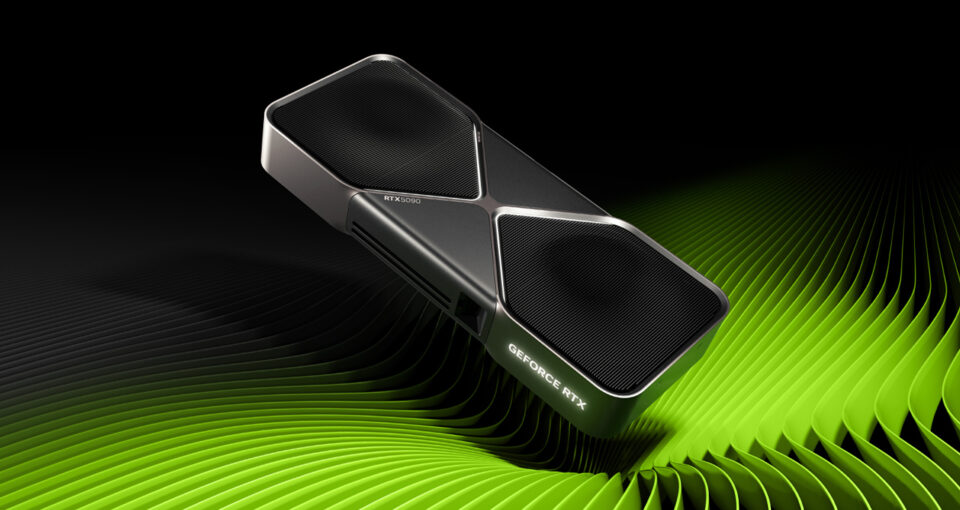NVIDIA GeForce RTX 50 Series GPUs supercharge generative AI on your PC

AI is seemingly everywhere, and there are so many ways that you can tap into its capabilities. Running AI on RTX hardware is a great way to get exceptional performance while running AI locally, and with the recent launch of NVIDIA’s GeForce RTX 50 Series GPUs built on the new Blackwell architecture, there’s even more AI performance to take advantage of. To help users explore all the possibilities of generative AI, NVIDIA has also released a handful of special tools that streamline the process with its NIM microservices and AI Blueprints. These not only showcase ways different generative AI tools can work in conjunction to unlock new possibilities but also provide the means to mix and match different tools on your own, letting you create a generative AI workflow tailored to your own needs.
NVIDIA’s NIM microservices are a great way to try out a bunch of AI capabilities. While most generative AI tools are built around massive large language models that can be a lot to wrangle onto a personal computer, NIM microservices are smaller, optimized versions of these AI models. You can find different tool sets within the NIM microservices for all sorts of generative AI tasks, such as text or image generation, voice-to-text transcription or even text-to-voice.
You can think of the NIM microservices as a powerful AI motor that gets built into a supercar — the program that’ll run the AI tools. NVIDIA has designed NIM microservices to be simple to integrate into apps and programs. For coders with a little know-how, NIM microservices take just a few lines of code to insert into programs. For everyone else, there are no-code options to implement NIM microservices with graphical user interfaces like AnythingLLM, ComfyUI, and LM Studio. Even if integrating NIM microservices on your own may seem too tricky, the simplicity means you’re likely to benefit from them anyway as more developers will be able to bring them to their own applications.
Another key advantage of these NIM microservices is that they’re optimized to run on NVIDIA’s hardware, giving you a performance boost for local processing so you can run AI on your own machine where other people might need to connect to a data center. With the new GeForce RTX 50 Series GPUs, you get the new fifth-generation Tensor Cores — cores dedicated to fast and efficient AI processing.
These Tensor Cores are the beating heart of the RTX 50 Series AI capabilities. Every AI model needs immense processing power, as they take a staggering amount of mathematical operations to produce fast and accurate results — a speed that’s often measured in TOPS (tera operations per second). And that kind of calculation is exactly what the Tensor Cores specialize in.
Your typical computer may be able to process a few TOPS, and some newer models with specialized hardware can hit a few dozen TOPS. With their fifth-generation Tensor Cores, the new GeForce RTX 50 Series GPUs can reach up to 3,352 TOPS. All that extra performance means significantly faster handling of AI tasks, letting you get more done faster or even run multiple AI models at the same time.
On top of the Tensor Cores being designed to handle this AI processing efficiently, the new version enables a special quantized form of these math operations called FP4. To put it simply, this truncates the numbers being run through each math operation, letting the AI models run with significantly smaller memory requirements. Where an AI model like Black Forest Labs’ FLUX.1 [dev] using the FP16 format could require 23GB of VRAM — something few consumer GPUs have — running the same model with FP4 requires less than half the VRAM. FP4 also simplifies the calculations getting done, letting GeForce RTX 50 Series graphics card complete AI tasks that much faster.
To start trying out the capabilities NVIDIA has built out, you don’t have to work on integrating NIM microservices or wait for developers to do so. At CES 2025, NVIDIA also introduced AI Blueprints. These are pre-packaged toolsets that combine multiple NIM microservices, showcasing the sort of utilities that can come from not just one AI model but multiple models working in harmony.
Take the PDF to Podcast AI Blueprint: With this tool, you can import a lengthy PDF that might have taken you all day to read. PDF to Podcast will read through it, convert its content in a podcast script, and then generate an audio podcast that you can listen to. You’ll get the content of the PDF delivered in a fun and accessible format. It can even go one step further, letting you ask questions and have the AI podcast hosts answer them in real-time.
With GeForce RTX 50 Series graphics processors, all of these capabilities come home. You’ll be able to tap into NIM microservices and AI Blueprints on your own local machine, letting you engage with your own files securely and run generative AI tools in a flash. And this just scratches the surface. You can find out more about AI on RTX PCs here.
Get daily insight, inspiration and deals in your inbox
Sign up for breaking news, reviews, opinion, top tech deals, and more.

